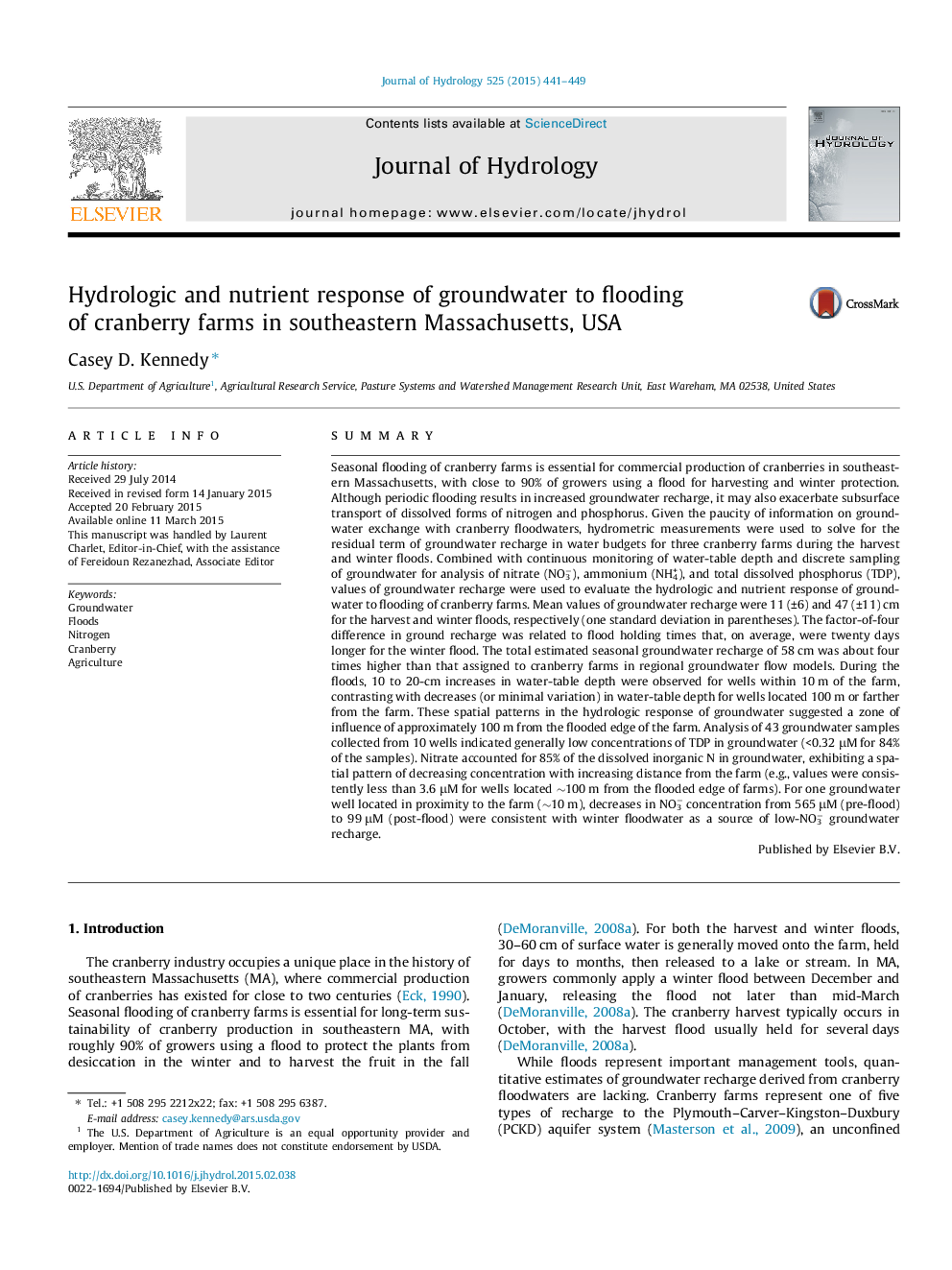| کد مقاله | کد نشریه | سال انتشار | مقاله انگلیسی | نسخه تمام متن |
|---|---|---|---|---|
| 6410628 | 1629925 | 2015 | 9 صفحه PDF | دانلود رایگان |
- Flooding of cranberry farms resulted in groundwater recharge.
- Groundwater response showed a zone of influence of ~100Â m from the edge of the farm.
- Flooding did not increase concentrations of nitrogen and phosphorus in groundwater.
SummarySeasonal flooding of cranberry farms is essential for commercial production of cranberries in southeastern Massachusetts, with close to 90% of growers using a flood for harvesting and winter protection. Although periodic flooding results in increased groundwater recharge, it may also exacerbate subsurface transport of dissolved forms of nitrogen and phosphorus. Given the paucity of information on groundwater exchange with cranberry floodwaters, hydrometric measurements were used to solve for the residual term of groundwater recharge in water budgets for three cranberry farms during the harvest and winter floods. Combined with continuous monitoring of water-table depth and discrete sampling of groundwater for analysis of nitrate (NO3â), ammonium (NH4+), and total dissolved phosphorus (TDP), values of groundwater recharge were used to evaluate the hydrologic and nutrient response of groundwater to flooding of cranberry farms. Mean values of groundwater recharge were 11 (±6) and 47 (±11) cm for the harvest and winter floods, respectively (one standard deviation in parentheses). The factor-of-four difference in ground recharge was related to flood holding times that, on average, were twenty days longer for the winter flood. The total estimated seasonal groundwater recharge of 58 cm was about four times higher than that assigned to cranberry farms in regional groundwater flow models. During the floods, 10 to 20-cm increases in water-table depth were observed for wells within 10 m of the farm, contrasting with decreases (or minimal variation) in water-table depth for wells located 100 m or farther from the farm. These spatial patterns in the hydrologic response of groundwater suggested a zone of influence of approximately 100 m from the flooded edge of the farm. Analysis of 43 groundwater samples collected from 10 wells indicated generally low concentrations of TDP in groundwater (<0.32 μM for 84% of the samples). Nitrate accounted for 85% of the dissolved inorganic N in groundwater, exhibiting a spatial pattern of decreasing concentration with increasing distance from the farm (e.g., values were consistently less than 3.6 μM for wells located â¼100 m from the flooded edge of farms). For one groundwater well located in proximity to the farm (â¼10 m), decreases in NO3â concentration from 565 μM (pre-flood) to 99 μM (post-flood) were consistent with winter floodwater as a source of low-NO3â groundwater recharge.
Journal: Journal of Hydrology - Volume 525, June 2015, Pages 441-449
